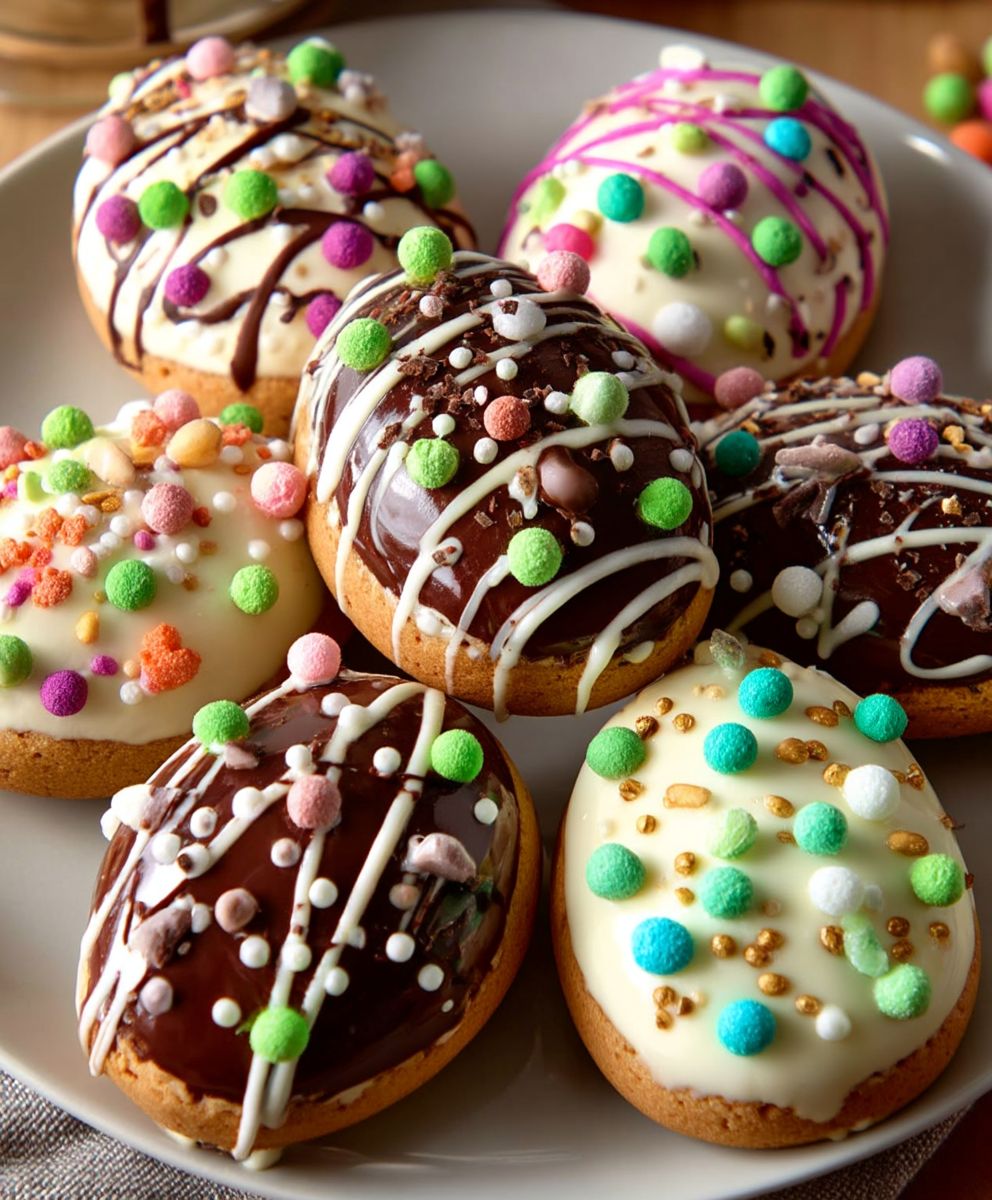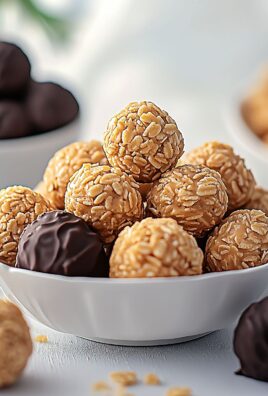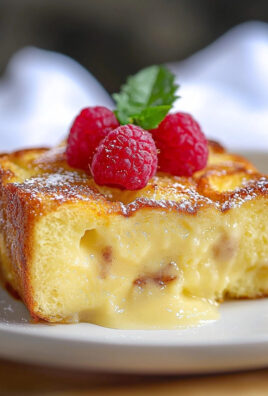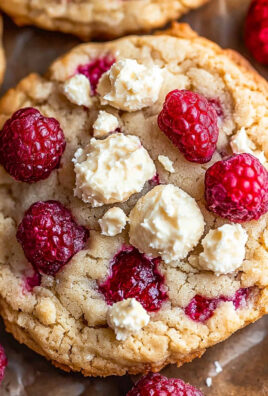Easter egg cookies: just the words conjure up images of pastel colors, delicate icing, and the sweet anticipation of springtime celebrations! But these aren’t just any cookies; they’re edible works of art, miniature canvases for expressing your creativity and spreading joy. Have you ever wondered about the history behind decorating eggs for Easter? The tradition dates back centuries, symbolizing rebirth and new beginnings. Decorating cookies in the shape of eggs is a delightful extension of this ancient custom, bringing a touch of whimsy to our modern celebrations.
What makes Easter egg cookies so irresistible? It’s a combination of factors. The buttery, melt-in-your-mouth texture of the cookie itself is undeniably satisfying. Then there’s the visual appeal the vibrant colors, intricate designs, and the sheer artistry that goes into decorating each one. And let’s not forget the fun factor! Decorating these cookies is a fantastic activity for families and friends, a chance to bond, laugh, and create lasting memories. Whether you’re a seasoned baker or a complete novice, these cookies are surprisingly easy to make and customize. So, gather your ingredients, unleash your inner artist, and let’s create some Easter magic together!
Ingredients:
- For the Sugar Cookies:
- 3 cups all-purpose flour, plus more for dusting
- 1 teaspoon baking powder
- 1/2 teaspoon baking soda
- 1/4 teaspoon salt
- 1 cup (2 sticks) unsalted butter, softened
- 1 1/2 cups granulated sugar
- 1 large egg
- 1 teaspoon vanilla extract
- 1/2 teaspoon almond extract (optional, but adds a lovely flavor!)
- For the Royal Icing:
- 4 cups powdered sugar, sifted
- 3 tablespoons meringue powder
- 6-8 tablespoons warm water
- Gel food coloring (various colors for decorating)
Preparing the Sugar Cookie Dough:
- Combine Dry Ingredients: In a medium bowl, whisk together the flour, baking powder, baking soda, and salt. This ensures that the leavening agents are evenly distributed throughout the dough, leading to a more consistent bake.
- Cream Butter and Sugar: In a large bowl (or the bowl of a stand mixer), cream together the softened butter and granulated sugar until light and fluffy. This usually takes about 3-5 minutes. Scrape down the sides of the bowl occasionally to ensure everything is evenly incorporated. The creaming process is crucial for creating a tender cookie.
- Add Egg and Extracts: Beat in the egg, followed by the vanilla extract and almond extract (if using). Mix until just combined. Be careful not to overmix at this stage.
- Gradually Add Dry Ingredients: Gradually add the dry ingredients to the wet ingredients, mixing on low speed until just combined. Again, be careful not to overmix. Overmixing develops the gluten in the flour, resulting in a tough cookie. Mix until the flour is *almost* completely incorporated, then stop.
- Form the Dough into Discs: Divide the dough in half and flatten each half into a disc. Wrap each disc tightly in plastic wrap. Flattening the dough helps it chill more evenly and quickly.
- Chill the Dough: Refrigerate the dough for at least 2 hours, or preferably overnight. This chilling time is essential! It allows the gluten to relax, preventing the cookies from spreading too much in the oven. It also makes the dough easier to roll out.
Rolling, Cutting, and Baking the Cookies:
- Preheat Oven and Prepare Baking Sheets: Preheat your oven to 350°F (175°C). Line baking sheets with parchment paper or silicone baking mats. This prevents the cookies from sticking and makes cleanup a breeze.
- Roll Out the Dough: On a lightly floured surface, roll out one disc of dough to about 1/4 inch thickness. Keep the remaining dough chilled while you work. If the dough is sticking, add a little more flour to your rolling surface. Try to roll the dough evenly to ensure the cookies bake uniformly.
- Cut Out Cookie Shapes: Use Easter egg cookie cutters (or any other shapes you like!) to cut out cookies from the rolled-out dough. Dip the cookie cutter in flour before each cut to prevent sticking.
- Place Cookies on Baking Sheets: Carefully transfer the cut-out cookies to the prepared baking sheets, leaving about 1 inch of space between each cookie.
- Bake the Cookies: Bake for 8-12 minutes, or until the edges are lightly golden brown. The baking time will vary depending on the size and thickness of your cookies. Keep a close eye on them to prevent burning.
- Cool the Cookies: Let the cookies cool on the baking sheets for a few minutes before transferring them to a wire rack to cool completely. Cooling them on the baking sheet allows them to firm up slightly, preventing them from breaking when you move them.
- Repeat: Repeat the rolling, cutting, and baking process with the remaining dough. You can re-roll the scraps of dough, but keep in mind that the more you re-roll the dough, the tougher the cookies will become.
Preparing the Royal Icing:
- Combine Dry Ingredients: In a large bowl (or the bowl of a stand mixer), whisk together the sifted powdered sugar and meringue powder. Sifting the powdered sugar is important to remove any lumps, which will result in a smoother icing.
- Add Water: Gradually add the warm water, one tablespoon at a time, mixing on low speed until the icing reaches a stiff peak consistency. The amount of water you need will vary depending on the humidity. You want the icing to be thick enough to hold its shape when piped.
- Divide and Color the Icing: Divide the icing into separate bowls, depending on how many colors you want to use. Add gel food coloring to each bowl, one drop at a time, and mix well until you achieve your desired colors. Gel food coloring is preferred over liquid food coloring because it’s more concentrated and won’t thin out the icing as much.
- Adjust Consistency (if needed): For outlining, you’ll want a thicker consistency icing. For flooding (filling in the outlined areas), you’ll need to thin the icing slightly by adding a few drops of water at a time until it reaches a “15-second consistency.” This means that when you lift a spoonful of icing and let it fall back into the bowl, it should take about 15 seconds for the surface to smooth over.
- Prepare Piping Bags: Transfer each color of icing to a piping bag fitted with a small round tip (for outlining) or a coupler (for using different tips). You can also use squeeze bottles for flooding.
Decorating the Easter Egg Cookies:
- Outline the Cookies: Using the thicker consistency icing, outline the edges of each cookie with your desired color. This creates a dam to prevent the flood icing from running off the edges.
- Flood the Cookies: Using the thinner, “flood” consistency icing, fill in the outlined areas of each cookie. You can use a toothpick or scribe tool to help spread the icing evenly and pop any air bubbles.
- Add Details: While the flood icing is still wet, you can add details such as sprinkles, nonpareils, or other decorations. You can also pipe additional designs on top of the wet flood icing for a “wet-on-wet” effect.
- Let the Icing Dry Completely: Allow the icing to dry completely, which usually takes several hours or overnight. This is crucial! If you try to add more details before the base icing is dry, it will smudge.
- Add Additional Details (Optional): Once the base icing is dry, you can add more intricate details using the thicker consistency icing, such as polka dots, stripes, flowers, or any other designs you can imagine!
Tips for Success:
- Use Quality Ingredients: The quality of your ingredients will affect the taste and texture of your cookies. Use good quality butter, vanilla extract, and food coloring.
- Don’t Overmix the Dough: Overmixing the dough will develop the gluten, resulting in tough cookies. Mix until just combined.
- Chill the Dough: Chilling the dough is essential for preventing the cookies from spreading too much in the oven.
- Roll the Dough Evenly: Rolling the dough evenly will ensure that the cookies bake uniformly.
- Don’t Overbake the Cookies: Overbaking the cookies will make them dry and brittle. Bake until the edges are lightly golden brown.
- Let the Icing Dry Completely: Letting the icing dry completely is crucial for preventing smudging.
- Practice Makes Perfect: Don’t be discouraged if your first attempt isn’t perfect. Decorating cookies takes practice!
Troubleshooting:
- Cookies Spreading Too Much: This is usually caused by not chilling the dough long enough, using too much butter, or overmixing the dough.
- Icing Too Thick: Add a few drops of water at a time until it reaches the desired consistency.
- Icing Too Thin: Add a little more sifted powdered sugar until it reaches the desired consistency.
- Air Bubbles in Icing: Use a toothpick or scribe tool to pop any air bubbles.
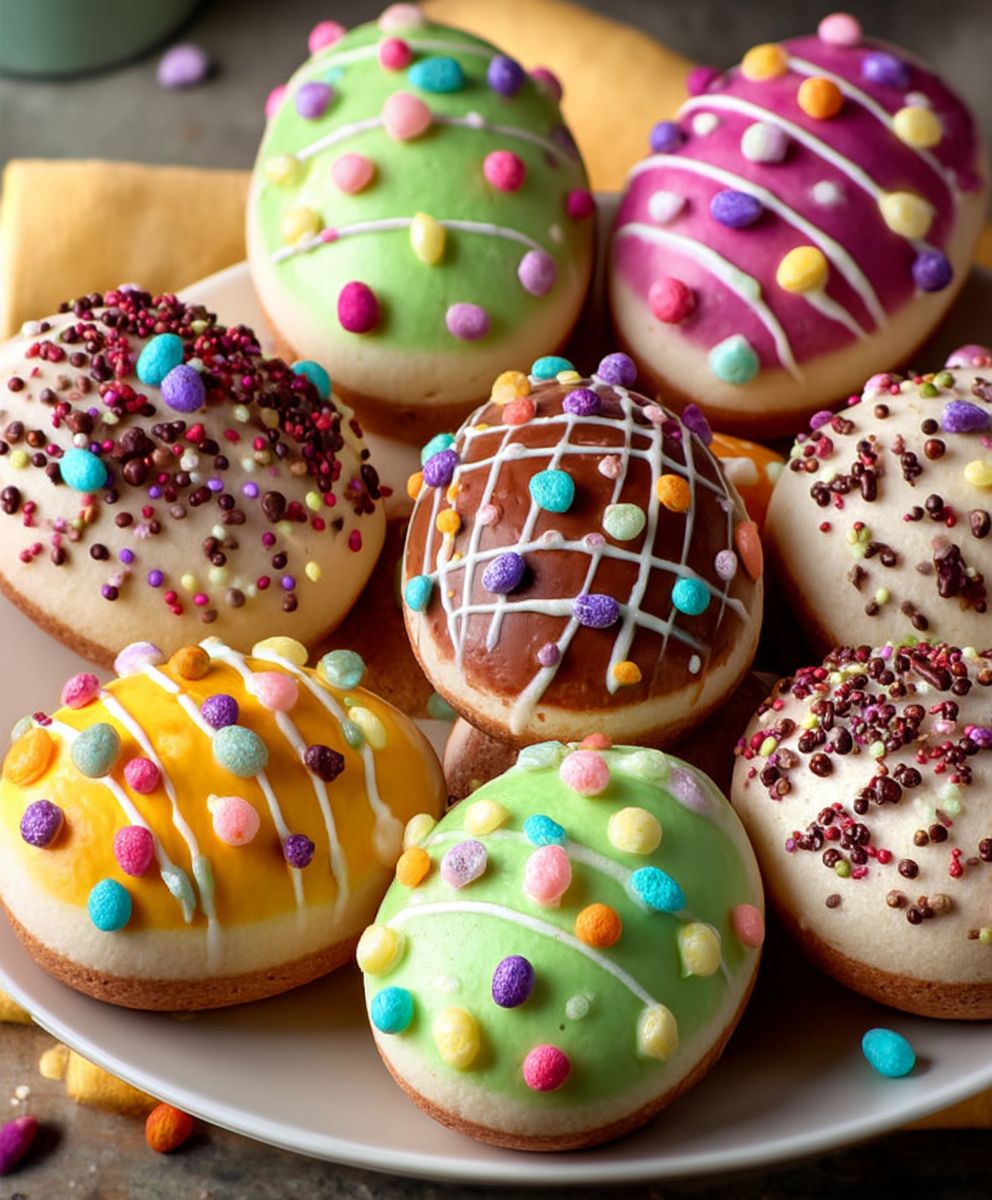
Conclusion:
So there you have it! These Easter egg cookies are more than just a sweet treat; they’re a delightful project, a canvas for your creativity, and a guaranteed crowd-pleaser. I truly believe this recipe is a must-try this Easter season, and here’s why: It’s surprisingly simple, even for beginner bakers. The dough comes together quickly, and the decorating is where you can really let your imagination run wild. Plus, the end result is absolutely stunning imagine the looks on your loved ones’ faces when you present them with a platter of these beautifully decorated cookies!
But beyond the aesthetics, these cookies taste incredible. The buttery, vanilla-infused dough is perfectly balanced by the sweetness of the royal icing. It’s a classic combination that never fails to satisfy. And let’s be honest, who can resist a homemade cookie, especially one that’s as festive and fun as these?
Serving Suggestions and Variations:
These Easter egg cookies are perfect on their own, enjoyed with a glass of cold milk or a cup of hot tea. But don’t be afraid to get creative with how you serve them!
* Easter Baskets: Individually wrap the cookies in cellophane bags and tie them with colorful ribbons to add to Easter baskets. They make a charming and delicious addition to any Easter gift.
* Dessert Platter: Arrange the cookies on a beautiful platter alongside other Easter treats like mini cupcakes, chocolate bunnies, and fruit skewers. This creates a stunning centerpiece for your Easter dessert table.
* Cookie Pops: Before baking, insert lollipop sticks into the bottom of the cookies. Once decorated, you’ll have adorable Easter egg cookie pops that are perfect for kids (and adults!).
* Sandwich Cookies: Spread a layer of buttercream frosting or chocolate ganache between two cookies to create a decadent sandwich cookie.
* Flavor Variations: Experiment with different extracts in the dough. Almond extract, lemon extract, or even a hint of orange zest can add a unique twist to the flavor. You can also add sprinkles or chocolate chips to the dough for extra texture and flavor.
* Icing Alternatives: While I love royal icing for its smooth finish and ability to hold intricate designs, you can also use buttercream frosting or even a simple glaze made from powdered sugar and milk.
Don’t be intimidated by the decorating! Start with simple designs like polka dots, stripes, or zigzags. As you gain confidence, you can try more elaborate patterns. Remember, the most important thing is to have fun and enjoy the process. Even if your cookies aren’t perfect, they’ll still taste delicious!
I’m so excited for you to try this recipe and create your own beautiful batch of Easter egg cookies. I know you’ll love them as much as I do. And I can’t wait to see what you come up with!
So, grab your ingredients, preheat your oven, and get ready to bake some Easter magic. Once you’ve made your cookies, please share your creations with me! Tag me in your photos on social media I’d love to see your decorated masterpieces. And don’t hesitate to leave a comment below with your tips, tricks, and variations. Happy baking, and Happy Easter! I’m confident that you’ll find this Easter egg cookies recipe a delightful addition to your holiday traditions.
Easter Egg Cookies: Delicious Recipes and Decorating Ideas
Classic sugar cookies decorated with vibrant royal icing, perfect for Easter celebrations!
Ingredients
- 3 cups all-purpose flour, plus more for dusting
- 1 teaspoon baking powder
- 1/2 teaspoon baking soda
- 1/4 teaspoon salt
- 1 cup (2 sticks) unsalted butter, softened
- 1 1/2 cups granulated sugar
- 1 large egg
- 1 teaspoon vanilla extract
- 1/2 teaspoon almond extract (optional)
- 4 cups powdered sugar, sifted
- 3 tablespoons meringue powder
- 6-8 tablespoons warm water
- Gel food coloring (various colors)
Instructions
- In a medium bowl, whisk together flour, baking powder, baking soda, and salt.
- In a large bowl (or stand mixer), cream together softened butter and granulated sugar until light and fluffy (3-5 minutes). Scrape down the sides of the bowl.
- Beat in egg, vanilla extract, and almond extract (if using) until just combined.
- Gradually add dry ingredients to wet ingredients, mixing on low speed until just combined. Be careful not to overmix.
- Divide dough in half and flatten each half into a disc. Wrap each disc tightly in plastic wrap.
- Refrigerate dough for at least 2 hours, or preferably overnight.
- Preheat oven to 350°F (175°C). Line baking sheets with parchment paper or silicone baking mats.
- On a lightly floured surface, roll out one disc of dough to about 1/4 inch thickness. Keep remaining dough chilled.
- Use Easter egg cookie cutters (or other shapes) to cut out cookies. Dip the cookie cutter in flour before each cut to prevent sticking.
- Place cookies on prepared baking sheets, leaving about 1 inch of space between each cookie.
- Bake for 8-12 minutes, or until edges are lightly golden brown.
- Let cookies cool on baking sheets for a few minutes before transferring to a wire rack to cool completely.
- Repeat with remaining dough.
- In a large bowl (or stand mixer), whisk together sifted powdered sugar and meringue powder.
- Gradually add warm water, one tablespoon at a time, mixing on low speed until icing reaches a stiff peak consistency.
- Divide icing into separate bowls, depending on how many colors you want to use. Add gel food coloring to each bowl, one drop at a time, and mix well.
- Adjust consistency: For outlining, use a thicker consistency. For flooding, thin the icing slightly by adding a few drops of water at a time until it reaches a “15-second consistency.”
- Transfer each color of icing to a piping bag fitted with a small round tip (for outlining) or a coupler (for using different tips). You can also use squeeze bottles for flooding.
- Using the thicker consistency icing, outline the edges of each cookie with your desired color.
- Using the thinner, “flood” consistency icing, fill in the outlined areas of each cookie. Use a toothpick or scribe tool to help spread the icing evenly and pop any air bubbles.
- While the flood icing is still wet, add details such as sprinkles, nonpareils, or other decorations. You can also pipe additional designs on top of the wet flood icing for a “wet-on-wet” effect.
- Let the icing dry completely, which usually takes several hours or overnight.
- Once the base icing is dry, you can add more intricate details using the thicker consistency icing, such as polka dots, stripes, flowers, or any other designs you can imagine!
Notes
- Use quality ingredients for the best taste and texture.
- Don’t overmix the dough.
- Chilling the dough is essential.
- Roll the dough evenly.
- Don’t overbake the cookies.
- Let the icing dry completely.
- Practice makes perfect!

